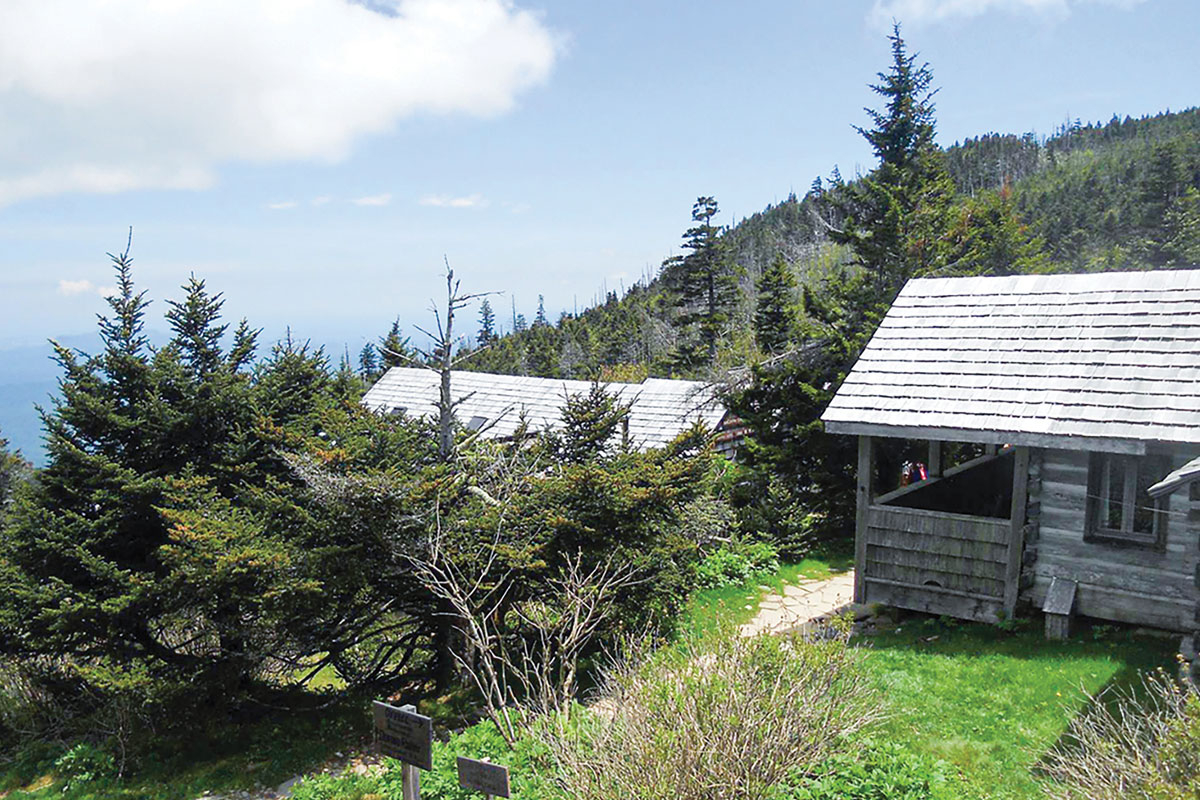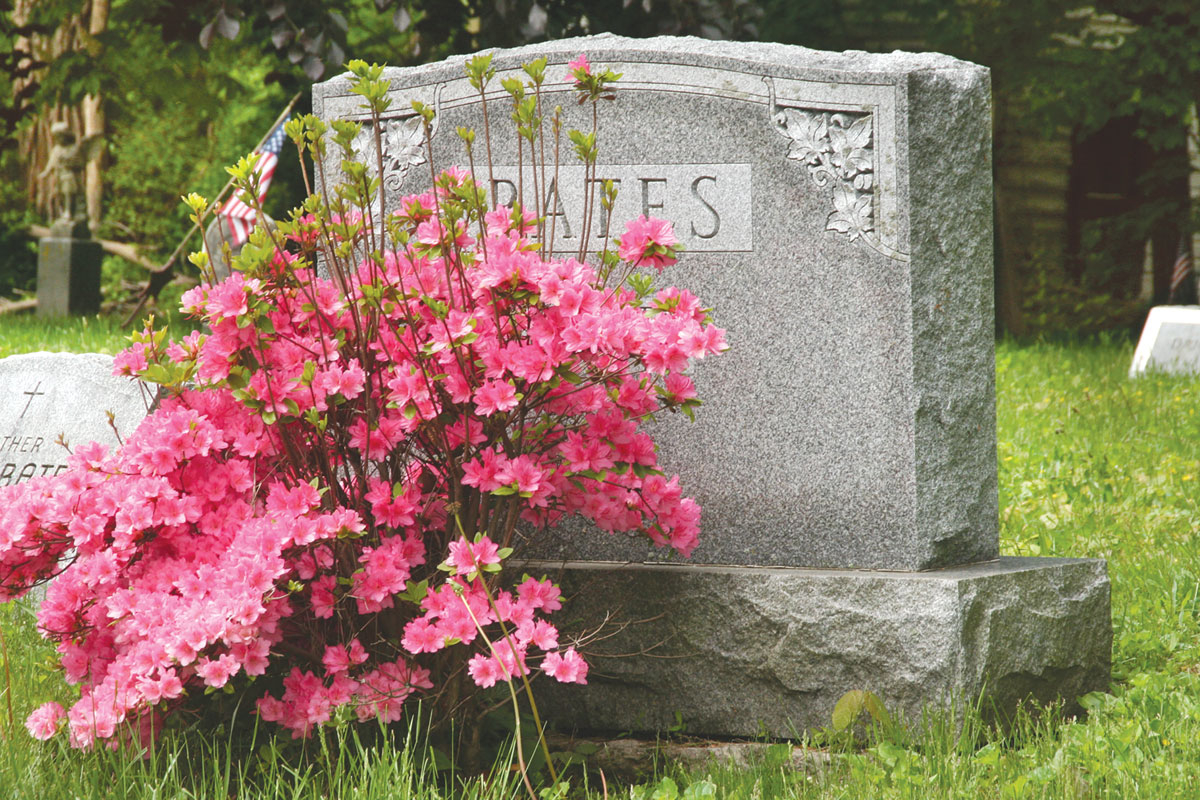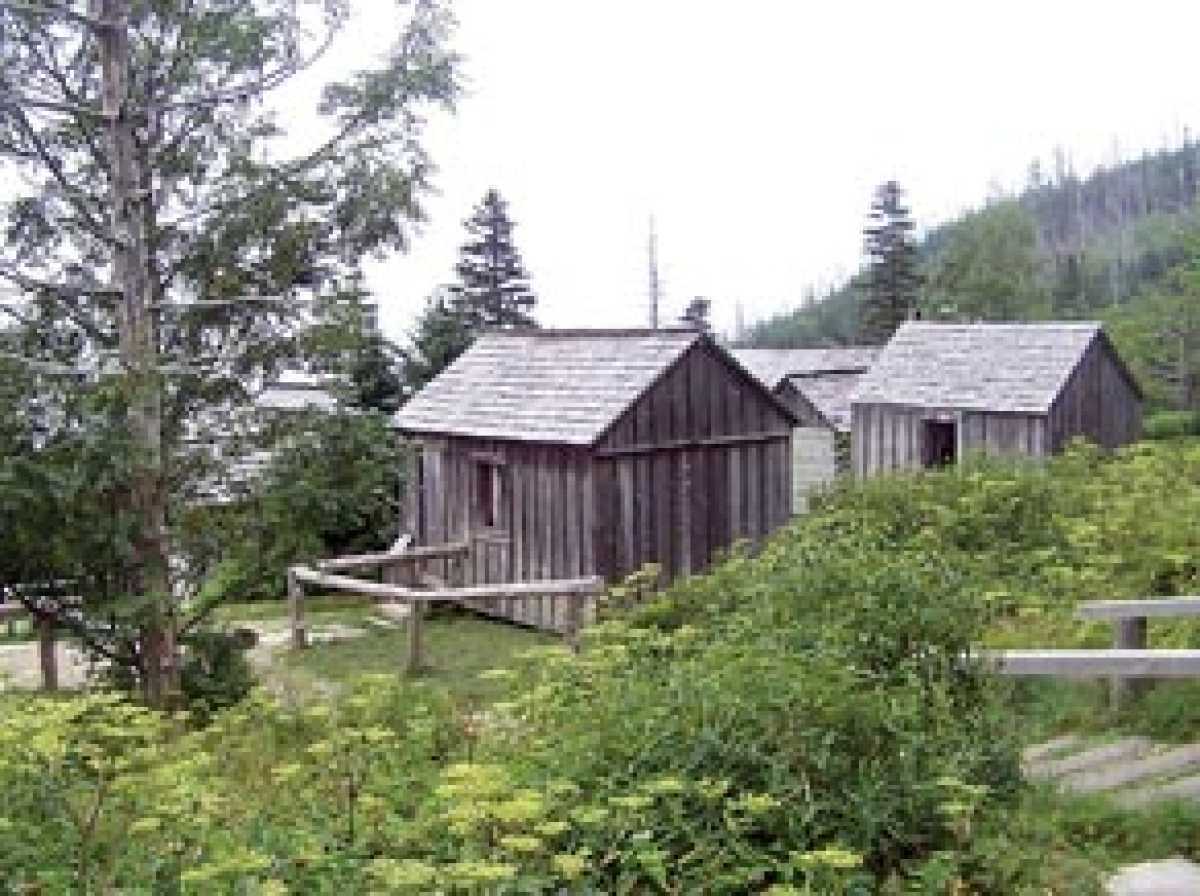Lewis Penland, chairman of the Macon County Planning Board, to commissioners:
First off, I would like to thank Chairman Beale and the commissioners for meeting with us jointly tonight. And thank the planning board members, the comprehensive plan subcommittee members, and the safe slope development workgroup members for attending. And thank you to the public in attendance. We can see from the attendance that many people care about planning in Macon County.
Our work is important for so many reasons. We hear over and over during campaigns and we read in numerous surveys and studies, that planning is the most important issue in Macon County. And it’s not an issue divided between Democrats and Republicans, liberal or conservative in the true sense — because we believe in looking smartly at the way this county develops in an effort to conserve resources for the future, to build a strong stable economy and to protect property rights and the quality of life and heritage that has drawn and kept so much investment in this county.
Another indication that this work is so important is the fact that our board and subcommittees are made up of volunteers. Every member of our board has a family and obligations, yet they volunteer countless hours with the hope that their time will make a difference for future generations. I keep hearing how we need a different voice on the planning board or how we need diverse opinions. Well, if you’ve ever been to a board meeting, you would know that we have that covered. We disagree on almost everything, but in the end we come to consensus. And we agree on the basic principles of planning for the future of the county. And none of our volunteers, no matter how much he or she might disagree, works actively against the board, as was the case with Mr. Goodman. We agree to disagree and then we get down to the hard work.
Among the most active of our volunteers is Al Slagle. Al comes from an old Macon County family that has a long history of public service. Al has been working hard over the past year with our safe slopes workgroup. He has put together one of the most diverse groups of people and built a consensus among them. On the workgroup with Al, who is a retired geologist, is Paul Shuler, a grading contractor, Susan Ervin, a planning board member, Reggie Holland, a building and developer, Stacy Guffey, former county planner who now works on preservation and economic development, Barry Clinton, a scientist from Coweeta Lab who studies the forestry and hydrology of our mountains, and John Becker, a local real estate agent. This group of volunteers, appointed by the planning board, have developed a set of reasonable recommendations to guide us as we develop safe slope-development practices. And along the way, they have helped build a consensus among their family, friends and peers in their professions; so that we can now say we have tremendous support in the community for addressing slope development issues. This is the reason we cannot afford to lose Al Slagle as a planning board member.
Like the rest of the nation, our local economy is in bad shape. We need investment and we need jobs. The way we get those is through smart planning that creates a safe environment for investment that will lead to job creation. But that’s not what Macon County offers right now. What we offer is a “caveat emptor,” “buyer beware” atmosphere. For example, if I buy a used car down at the local lot and the brakes don’t work on that car, then, we come to find out, the salesman knew that all along, but he wanted to make the sale, so he didn’t disclose. Well, a couple of things are going to happen. First of all I will never buy a car from that individual again. Secondly, I’m going to tell all my friends “don’t buy anything from that car lot because you don’t know what you’re getting.” The same thing is happening right now with our county.
People who’ve invested in property here only to see that property affected by slides or erosion and runoff on their on property or their neighbors’ property. They in turn are telling their friends.
Over the long term, that’s going to hurt us. People will invest in areas where they know that their investment, not only in the monetary value of the property, but also their expectation of quality of life, will be protected. And some people will say that this can all be settled in court. Is that what we want for our county? A litigious county? Does that look good to potential investors and property owners?
Let’s be straight here. The reason people move to this county and stay in this county and invest in this county is because of clean water, the small-town atmosphere, the slower pace of life, fresh air, farmland, open space, and the most beautiful mountains in the world.
As a developer, I can say that we were well on our way to destroying those very things before the economic downturn. Now is our one and only chance to get things right, to protect our assets like any smart businessperson would do, and to build a strong stable economy for future generations.
We have sat by as people from faraway places have promised us the moon if only we would stay out of their way and let them develop. Well that promise has come and gone and we’re left with unstable roads and house sites, unlivable homes, and hundreds of foreclosed lots burdening our banks.
Folks, we’re looking at two choices — the vision that you can already see on our mountainsides, a vision that will bring short-term profit to a few. Or a vision built on our local sensibilities that works hand in hand with developers, property owners, environmentalists, long-term families and newcomers to create a strong stable economy that honors rather than destroys our way of life.
This is a critical time and that’s why we need dedicated members on this board who put personal interests aside for what’s best for the future of this county — members like Al Slagle.
I respectfully request that you remove Mr. Goodman from the planning board and appoint Al Slagle in his place. I also request that in the future, as has been the tradition, the planning board be consulted on any appointments to the board and that appointments be based on qualifications, not on political affiliations, and further that these decisions be deliberative and not on the spur of the moment because these appointments have long-term effect. I fully understand that the planning board serves at your pleasure, but it is important to our functioning as a board that we be consulted on any changes. We have to have a cohesive board in order to be effective. And finally, I would like to request that the board of commissioners and planning board communicate on a regular basis so that we can build a better understanding between the two boards.
On a personal note. At this point, I’d like to take the opportunity to address in public something I’ve been hearing that’s going around. There are some folks, and I’m pretty sure I can guess who they are, that have been spreading the rumor that Al has been working on these recommendations with the aim of (I quote) “creating himself or his family members a job.” I have known Al for many years and I can tell you that is not just a lie, it’s a damn lie. And I think such a lie speaks to the level that some people will stoop to and to the fact that when some people run out of constructive arguments they will resort to attacking good people. If you have an issue or constructive input to the work we’re doing, then please offer it, but personal attacks are just morally wrong and will only serve to undermine your argument.
Susan Ervin, long-time member of the Macon County Planning Board, to commissioners:
I would like to speak still in support of reinstating Al Slagle to the planning board and against appointing anyone, ever to the planning board or any other board, who is actively opposed to the missions and procedures of that board. People who oppose land-use regulation and actively work against it, no matter how reasonable, moderate and needed it is, will be a detriment to this board. Al Slagle, on the other hand, has worked hard to develop reasonable, moderate and much-needed standards for slope development. I would also ask that you include the planning board in decisions about who its members will be.
You would not put someone on the library board who wants to end public support for libraries or someone on the EDC who opposes all government participation in economic development. It’s been said that we need diversity of opinion on the board. As far as representing the interests of development, quite a few planning board members are involved financially in some aspect of development, building and real estate, so the interests of that industry are well represented. If you want more diversity, we could use the knowledge of an engineer, architect, community organizer, someone in health services or social services or land conservation, a biologist, forester, hydrologist, outdoor recreation worker, cultural or natural historian, wildlife manager.
It’s time for us to support the needs and rights of the landowner and homeowner, of the community, of the environment, and of future generations rather than the short-term profits of some developers who want no controls and no accountability.
Too many times we’ve unconditionally supported the rights of developers only to be left with substandard development and empty lots that now threaten our local economy, environment and safety. On Thursday night, the courtroom was filled with people who wanted to express their support for planning, for Al Slagle and slope-development standards, and against inappropriate appointments to the board.
We ask now and in the future you build a stronger planning board, rather than weakening it. You will earn the respect and gratitude of many good people in the process. Thank you for your consideration.
New Macon commission chair selected — Board debates planning changes
Macon County commissioners almost couldn’t hold a meeting Monday night because they couldn’t agree on a new chairman.
With newly elected state Sen. Jim Davis, R-Franklin, absent because of a mandatory meeting in Raleigh, the board split 2-2 over whether former Chairman Ronnie Beale, a Democrat, should retain the post; or if Brian McClellan, a Republican, would take his place.
Bobby Kuppers, a Democrat, sided with Beale. Ron Haven, a Republican newly elected to the board, took McClellan’s part.
“We’re the majority now,” Haven said bluntly.
Davis will leave the commission board next month. Republican Kevin Corbin will fill the two years remaining on Davis’ four-year term.
Following a five-minute recess called by acting chairman and County Manager Jack Horton, the Democrats returned to acknowledge they’d lose the battle at some point, anyway. At least as soon as Davis, a Republican stalwart, could cast his vote for McClellan.
Kuppers said he’d learned from Horton and board attorney Chester Jones that legally the commissioners could do nothing until a chairman was appointed.
“If we do not reconcile this logjam, the meeting will adjourn and we will be able to conduct no business,” Kuppers said, adding that he was casting his support to McClellan with “great reservation and trepidation.”
“We are here to do the business of the people,” Beale said in agreement.
The board unanimously voted to elect McClellan chairman and Kuppers vice chairman.
That taken care of, planning issues took center stage.
Franklin resident Shirley Ches told the board during the public comment period that she was “stunned and appalled” by the recent vote to dump Al Slagle off the planning board in favor of Jimmy Goodman.
“There were under-the-radar manipulations going on,” Ches said. “… fairness would dictate Mr. Slagle be reappointed.”
Emily Dale echoed Ches’ call for placing Slagle back on the planning board.
“I’m very relieved I was not given this same treatment when I was chairman of the planning board 20 years ago,” Dale scolded commissioners.
ALSO READ: Lewis Penland, chairman of the Macon County Planning Board, to commissioners
ALSO READ: Susan Ervin, long-time member of the Macon County Planning Board, to commissioners
The decision
After a certain amount of polite wrangling, and unheeded pleas from Commissioner Haven to slow down the process, the board of commissioners asked their attorney to look into two matters.
The first question is how they can legally increase the number of planning board members from its current makeup of 11 people to 13 people (there must be an odd number for voting purposes); and at Beale’s specific request, how they can legally remove a member of the planning board who “is detrimental” to the process.
These are the two key factors in whether Slagle can be reappointed to the planning board if he agrees to serve again, and how to kick Goodman off the board if he misbehaves.
Kuppers told Haven dilly dallying serves no good purpose. Best case, it will be January anyway before anything could happen, he said.
“People are excited about this,” Kuppers said, adding that he can’t go anywhere in Macon County right now without hearing people’s concerns about Goodman being placed on the planning board.
Additionally, the Democrat commissioner recommended that at some point the board consider having prospective commissioner-appointed board members vetted by the involved board’s chairman.
McClellan chimed in with the suggestion term limits be reinstated on some boards.
Finally, the board of commissioners agreed to meet with the planning board in January. This meeting, Beale said, is to have the planning board bring commissioners “up to speed on exactly what they are working on.”
GOP shift spells trouble for planning advocates
Commissioners’ appointment of a man to the Macon County Planning Board who has openly opposed that very concept has sparked outrage and an outpouring of support for the board’s beleaguered members.
The showdown for now is in Macon County, a conservative mountain community with a history of attracting newcomers whose ideologies are on the political fringes. But the questions raised are identical to those also being hotly debated in other mountain counties: Is land planning important? Will this region set meaningful restrictions on development? If so, when?
“Folks, we’re looking at two choices,” Lewis Penland, chairman of the Macon County Planning Board and a professional golf course developer, told a standing-room only crowd last week.
More than 100 people turned out for a special called meeting of the Macon County Board of Commissioners.
“The vision that you can already see on our mountainsides, a vision that will bring short-term profit to a few,” Penland said. “Or, a vision built on our local sensibilities that works hand in hand with developers, property owners, environmentalists, long-term families and newcomers to create a strong stable economy that honors rather than destroys our way of life.”
ALSO READ: New Macon commission chair selected
What happened
The stage was set for this debate on the future of land development in Macon County after three county commissioners voted Jimmy Goodman, a member of the Tea Party and a founder of the party chapter Freedom Works, onto the planning board late last month after the November election.
Republicans Jim Davis, Brian McClellan and Democrat Bob Simpson joined forces against Democrats Beale and Bobby Kuppers. Beale and Kuppers were not informed beforehand the game was afoot. Nor was the planning board consulted.
“What happened … has not been business as usual in this county,” said Beale, who openly acknowledged he was deeply wounded by what happened.
“This is Macon County, North Carolina, and we don’t treat people this way,” Kuppers said, and then added, “the process stunk.”
With the majority vote, Goodman replaced Al Slagle, a widely regarded native son and scion of a many-generation mountain family in Macon County. Slagle was up for routine reappointment.
Slagle was chairman of the planning board’s steep-slope subcommittee, a group tasked with studying mountainside development in the wake of natural and manmade landslides in the county. The worst occurred in 2004, when five people in Macon County died in the Peeks Creek community. Their homes were in the path of a natural debris flow. This tragedy helped convince commissioners to ask the planning board (which formed the steep-slope subcommittee) to consider where and how houses are built in Macon County.
This decision — to simply study steep-slope development — triggered widespread opposition, fueled by a slowing economy in which builders and developers couldn’t find work.
Helping lead this anti-planning movement was Goodman, a former member of the planning board. Who, Commissioner Beale revealed, had not been reappointed because other planning board members asked that he not be. Because, they said, Goodman deliberately obstructed their work and ability to function as a board.
Explaining the vote
The decision three years ago not to place Goodman back on the planning board was wrong, Simpson said.
“I was part of it, and I’ve regretted it ever since,” Simpson said during the special called meeting, adding that Goodman’s views on planning are representative of a large segment of Macon County’s population, “and they cannot be ignored.”
“I righted a wrong and I’ll stand by that,” Simpson said.
Republicans Davis and McClellan did express regrets over how the Goodman matter was handled. But there were no regrets in evidence over their appointment of an anti-planning advocate to the planning board — they said the planning board and steep-slope subcommittee, which includes real estate agents, developers and more traditional planning advocates — lacks diversity.
“I am not against planning,” McClellan said. “I am for planning. I am for diversity of thought.”
Davis echoed those sentiments. He, McClellan and Simpson each personally apologized to Slagle, rationalizing aloud that they had not really voted against him per se, but rather for the aforementioned diversity of thought. Slagle, who was offered the opportunity to speak in front of commissioners, declined.
The future of planning in Macon
Simpson was voted off the board of commissioners during the last election.
Davis is moving on to the state senate, with moderate Republican Kevin Corbin scheduled to take his place starting in January. Only McClellan, of the three who voted for Goodman, will remain on the county’s board of commissioners with Beale and Kuppers.
Republican Ron Haven, who has expressed strong reservations about placing controls on growth and flat-out opposed regulating steep-slope development, rounds out the board.
The new commission board has agreed to consider expanding the planning board so that Slagle can be placed back on it (see accompanying article). But Goodman — who has remained silent during this fight over his appointment — remains on the planning board, too.
Despite Republican commissioners’ apologies for how things were handled and assurances they support planning and the planning board as a whole, there is a real possibility many of the current members might yet resign their posts.
“Yes, we are still a board,” member Susan Ervin wrote in an email. “Some of us initially wanted to quit, but have been prevailed upon to hang in there. We will see how this settles out; it could still go completely down the tubes, depending on what happens with additional appointments if they enlarge the board.”
Cast of characters
• Al Slagle — Former chairman of the planning board’s steep-slope subcommittee. Not reappointed to planning board.
• Jimmy Goodman — Appointed to planning board in Al Slagle’s place. Ran unsuccessfully for state Senate against Macon commissioner and fellow Republican Jim Davis. Founder of a Tea Party chapter in Macon County called “Freedom Works.”
• Lewis Penland — Chairman of the Macon County Planning Board. Owns a company that specializes in building golf courses.
• Ronnie Beale — Democrat. Former chairman of the Macon County Board of Commissioners, reelected to a four-year term. An owner and operator of a construction company, and a strong proponent of land planning.
• Bobby Kuppers — Democrat. Two years are remaining on his four-year commission term. Is now the vice chairman of the Macon County Board of Commissioners.
• Jim Davis — Republican. Ousted state Sen. John Snow and won election to the General Assembly. His two-year term as a county commissioner will be filled by Kevin Corbin, a moderate Republican and a long-time member of the Macon County School Board.
• Brian McClellan — Republican. Reelected to another four-year term. New chairman of the Macon County Board of Commissioners.
• Ron Haven — Republican. Newly elected to the Macon County Board of Commissioners. Opposed studying the possible regulation of steep-slope development.
• Bob Simpson — Democrat. Lost a bid for reelection to the Macon County Board of Commissioners.
Franklin commercial corridors facing future controls
Sam Greenwood has been around the governmental block a few times. He twice served as Macon County’s manager, and after retiring he promptly returned to the ranks of bureaucracy again, this time as the town of Franklin’s manager.
So it shouldn’t surprise anyone to learn that Greenwood, that grizzled veteran of local government, has been working to position Franklin ahead of a probable state change that would complicate how towns annex. Which would mean the creation of new hurdles for towns seeking to broaden their tax bases. And that could result in less money for towns to provide services to its residents.
This is more or less why Franklin in July annexed more land and businesses, in preparation for this next phase: to extend its extraterritorial jurisdiction (ETJ), or the area of land — the urban-rural fringe, as it has been called — in which town leaders can plan and regulate development. State law allows towns that are Franklin’s size a one-mile ETJ. With the latest annexation, Franklin extended where the ETJ could go, because the one-mile measurement starts at the town’s official borders.
Those being placed in a new ETJ don’t have to pay town taxes. That’s a point Franklin Town Planner Michael Grubberman takes great pains to emphasize. Additionally, it is those future businesses — some perhaps not yet even envisioned — that will be expected to adhere to the same appearance standards as businesses built in town.
This extension of the ETJ, in large part, is also intended to knit together the disparate parts of Franklin. Pockets of annexation have taken place over the years. A business — the Ford dealership on U.S. 441 north of town is a good example — would ask the town to annex, and of course, provide it town services. Franklin would oblige. In doing so, gaps were left between the official borders and these newer additions.
“The town grew in dribs and drabs,” Greenwood said.
(An involuntary annexation of 88 land parcels is also under way in Franklin. An information meeting is scheduled for Nov. 22 at 5:30 p.m., and a public hearing will be held the following month. In a memo, Grubberman noted to the town board that the annexation involves “commercially developed parcels that are contiguous to the main body of town as well as parcels that we already surround that are not annexed, or that are partially annexed.”)
The ETJ, as proposed, does not a tidy one-mile circle make. Greenwood, Grubberman, and the town’s elected officials are focusing on controlling the commercial corridors: U.S. 441 south; U.S. 441 north; along the upper reaches of Highlands Road; out U.S. 64, and so on.
“We’re pretty much looking to shoot one mile out down the corridors,” Greenwood said.
At least one business owner, Debbie Drake (no kin to the other Drake family in Macon County) of Carolina Motel south of Franklin, believes this is a good idea. A native of Pennsylvania, she moved to Macon County after a layover in Florida. Uncontrolled, unfettered growth, Drake said, is a blight on a town’s beauty.
“If you don’t take steps to control zoning and the people moving in, you have the masses of people doing whatever they want to do,” she said. “And this is such a beautiful, quaint town.”
Want to know more?
A public hearing on the proposed extraterritorial jurisdiction for Franklin is scheduled for Nov. 1 at 7 p.m. at town hall.
Big lot mandate hampers housing growth in Sylva
Residential density is coming under scrutiny in Sylva after town leaders learned they require larger lots than most similar-sized towns.
Macon comprehensive plan stutters as work begins
Comprehensive planning is supposed to be, well, comprehensive. But as Macon County leaders are finding out, it’s not that easy to get the public’s opinion on how its government should work for the next 20 years.
After a three-month effort aimed at obtaining input on the county’s comprehensive plan, Derek Roland, Macon’s planning director, has only received 303 completed surveys in a county of some 35,000 permanent residents and thousands more second-home owners.
Meanwhile, the subcommittees charged with identifying the issues and action plans that would give shape to the final planning document have been plagued by poor attendance and a lack of a clarity concerning their mission.
“We were notified at our last meeting that there was some disconnect as to what the final outcomes should be,” Roland told a gathering of the subcommittees last week. “I’m hoping we can clear that up before you all leave here tonight.”
The slow start is a testament to the difficulty of the task at hand. The goal of the comprehensive plan is to create a guide for policy decisions concerning the county’s growth. It is addressing 10 different categories ranging from recreation, to land use, to education, to healthcare.
The project was commissioned in January 2009, but hand-picked subcommittees didn’t meet for the first time until October, when they began the process of coming up with recommendations in their specific areas. Since then, the sub-committees have struggled to wrap their heads around the project.
Last week, the planning board convened with the subcommittee chairs to regroup and signal a new beginning to the comprehensive planning process.
Chris Hanners, chair of the public services and economic development committee, was frustrated by the poor attendance of his committee members.
“It’s hard to make progress from month to month when you spend half the meeting getting people up to speed on what happened the last time,” Hanners said.
Hanners also said he wasn’t sure what the committee’s final product should look like.
Roland has taken the comprehensive planning process seriously. He has traveled to meetings in Sealy, Cowee, Upper Cartoogechaye, Pine Grove, Otto and Nantahala to explain why this process matters, why it will be different from the county’s two previous failed attempts.
The focus on public input has been his most compelling argument. But after all the meetings, less than 1 percent of the county’s residents have responded to the survey, which is available on-line and at various county and municipal offices.
Roland has already begun crunching the numbers the surveys have yielded and they are interesting, but, ultimately, of little use.
For instance, 72 percent of county residents believe protecting rural character is very important and only 51 percent think the same of recreation facilities.
As planning board member Carl Gillespie, a fifth generation native of Macon County, suggested, the numbers aren’t a clear representation of the public will.
“We need to bear in mind we’re sampling an extremely small percentage of people and we don’t even know what kind of cross-section we’re getting,” Gillespie said.
County Commissioner Bobby Kuppers urged the subcommittee members not to get discouraged.
“The dialogue, the discussion, the identification of problems is worthwhile on its own sake,” Kuppers said. “To this county, this effort means something.”
Planning Board Chair Lewis Penland also took the long view.
“It will always be a work in progress. To be a success it will have to be,” Penland said.
Penland urged the subcommittee members not to get discouraged before their work began in earnest.
“This is new to all of us, and I don’t want people to get discouraged,” Penland said. “The hardest part with a committee like this is to get engaged.”
Penland hailed the planning board’s success in creating a subdivision ordinance for the county as a sign that the comprehensive plan will work.
“The neatest part of all this is that growing up it seemed like there were a few people making decisions in this county and now the tide has changed and the people have the input,” Penland said.
Penland said the surveys were only one layer of the public input process.
“All we can do is deal with what we get,” Penland said. “I don’t know any other way. You can lead a horse to water but you can’t make ‘em drink.”
But it was Roland who addressed the practical side of the planning process.
Using the Henderson County plan –– which has won awards in Raleigh –– as a model, Roland methodically and concisely but energetically outlined the process, including a timeline and a set of concrete outcomes for the subcommittees.
For example, one of Henderson County’s recommendations is to “reduce farmland loss,” and the action strategy was “to consider the costs and practicality of establishing a farmland protection fund for Henderson County.”
The subcommittee chairs left with a clear understanding of what they were being asked to produce and the planning board announced they would extend the public input deadline until March 1 in the hopes of making a last hard push to get the survey numbers up.
“The presentation Derek gave left us with a clear direction, and as of now, I really feel good about the process,” Hanners said.
The subcommittees have the responsibility of settling on a final timeline for their recommendations by the planning board’s May 18 meeting.
Landslide maps one component of steep slope planning
The Macon County committee charged with proposing regulations for building on steep slopes is still swimming in a sea of ideas but has agreed on one point. It will incorporate landslide hazard maps into a proposed ordinance, though the maps won’t be the end-all, be-all.
“If we based it totally on that, I think we would be leaving out a lot of issues,” said Al Slagle, chairman of the committee and planning board member.
“I think everybody wants to see the risk maps used as a cross-reference,” said Susan Ervin, who serves on the committee and the planning board. “It’s very clear there’s going to be some kind of coordination.”
The high-resolution topographic maps pinpoint exactly where landslides have occurred in the past, where they are likely to occur in the future, and how far they might travel if they occur. The North Carolina Geological Survey will eventually create maps for every mountain county to better identify high-risk areas.
While the maps have been available for curious eyes at Macon County’s GIS office, as well as online, since 2006, they have not been formally integrated into the slope development process so far.
Members of the slope development strategies committee said the maps could come in handy for deciding which sites require technical study before development occurs. Other counties that have tackled similar ordinances have not had the luxury of such maps while making the major decision of which thresholds would trigger regulation.
Macon County currently has no regulations for steep slope construction. Developers and contractors can build on slopes as steep as they like without consulting with engineers or geotechnical experts.
Committee members said the ideal ordinance would not crush development on slopes with an iron fist. Rather, it would allow for safer, better-informed development.
“It’s not that those things can’t be done. It’s got to be done right,” said John Becker, a committee member and local Realtor.
Rick Wooten, senior geologist at the N.C. Geological Survey, said the landslide hazard maps could be helpful in this capacity.
“If you’re building a house, this can tell you the areas where it makes sense to take a close look at the landscape,” Wooten said.
In many cases, the path to improving safety can be as simple as moving a house 20 or 30 feet to one side.
Nevertheless, the landslide hazard maps are only one part of the equation.
“The maps are useful, but it still requires boots on the ground,” said N.C. Rep. Ray Rapp, D-Mars Hill, who has spearheaded a campaign to require minimal slope development ordinances for all counties in Western North Carolina.
While looking at where landslides are likely to strike can be valuable, the committee is considering other criteria, like the slope’s steepness and soil composition, both of which can affect safety.
The committee analyzed similar ordinances in Haywood and Jackson counties, as well as White County in Georgia, before beginning work on one for Macon County.
One idea floating around is to create no regulations for slopes under a 30 percent grade, mandate that the county conduct an in-house study to determine the need for a geotechnical investigation for 30 to 40 percent slopes, and call for an engineer or design professional to study slopes above 40 percent. Falling into unstable territory, as determined by the landslide hazard maps, would also require a technical inspection.
Others on the committee prefer a lower threshold for triggering the regulations. The in-house county oversight would kick on slopes greater than 25 percent, and mandatory engineering would be required on slopes over 35 percent.
Making data available
Traditionally, development in Macon County occurred in more accessible, gentle lying areas. But with an increasing number of second homes, as well as innovations in engineering, there has been more and more building on steep slopes and ridges.
“That’s likely to continue, so we would like it to be done in a way that did not endanger the people building those [and] people living in proximity,” said Ervin, who added that the county should not invest in public infrastructure for “unstable” projects.
But when it comes down to it, Ervin admits the committee is evaluating development on a “pretty low percentage of private properties,” since most of the steepest slopes in Macon County lie within the Nantahala National Forest..
“The risks really are quite low,” said Reggie Holland, another committee member and president of the Macon County Home Builder’s Association. “If it happens, the danger is quite high.”
According to Wooten, many of Macon County’s debris flows occurred on the east facing slopes of the Nantahala Mountains.
In case the landslide hazard maps are not incorporated into the ordinance, they would still serve an important function by helping forecast where landslides may occur.
“They’re very useful to have,” said Joshua Pope, GIS coordinator for Macon County. “It’s like predicting weather. It’s not set in stone, but watching The Weather Channel is still useful.”
And as always, they are available to anyone who wants to take a look.
“Aside from regulations, the most important thing is that people have that information,” said Stacy Guffey, committee member and former county planner. “We have this information, we should use it.”
The reason Macon County has this resource in the first place is because it suffered the most severe damage from the 2004 hurricanes in WNC, according to Wooten.
The Hurricane Recovery Act of 2005 required the maps to eventually be created for all counties in WNC.
Each set of landslide hazard maps has taken a year to complete, with three counties finished up so far: Macon, Watauga and Buncombe.
The N.C. Geological Survey is currently working on landslide hazard maps for Jackson and Henderson counties. It will take at least a year to finish the maps for Jackson County, Wooten said.
Pending final approval and funding from Raleigh, the agency will study Haywood County after maps are completed for Henderson and Jackson counties.
The cost of regulations
After the landslide at Peeks Creek in 2004 claimed five lives, Macon County became well aware of the dangers of locating development on hazardous areas.
“We don’t want to see another Peeks Creek going on — ever,” said Becker. “Profit shouldn’t go before safety.”
Still, Becker said he would like to see an ordinance that ensures the safety of Macon County residents without imposing too many rules and regulations.
Teresa Murray, president of the Franklin Board of Realtors, said Realtors do have concerns but understand that something needs to be done.
“There’ll be some costs no doubt when it comes into play,” said Murray. “Hopefully, we can have an ordinance that benefits everyone.”
Requiring technical studies to evaluate dangers obviously would tack on to the cost of developing, but Rapp reminded real estate agents that it would be beneficial to sell property on a steep slope five or six times rather than sell it once and have it torn apart by a landslide.
Initially, Rapp hoped Realtors would be required to inform clients about properties that lie in areas prone to landslides.
“I’m willing to compromise on that as long as we require that the structures be built safely,” said Rapp. “If you’re doing it right from the beginning, then it takes the fire out of this issue.”
Rapp said he will continue to push for legislation that mandates those minimum slope development ordinances in Western North Carolina.
“It’s so fundamental. It’s so basic,” said Rapp. “It’s hard for me to fathom why people will be opposed to it, other than we’re talking about serious, big dollars that can be impacted.”
Rapp said the next big challenge is to make sure homeowner’s insurance for landslides is made widely available.
What other counties are doing
As Macon County crafts its first set of steep slope building regulations, one issue confronting planners is when the regulations should kick-in. Other counties with steep slope ordinances faced a similar debate: what is the treshhold for triggering oversight?
• Macon County has the benefit of state landslide hazard maps, which will play a role in determining that treshhold. Other counties didn’t have such maps when crafting their ordinance, and instead rely solely on the slope.
• Jackson: Steep slope ordinance applies on slopes with a grade of more than 30 percent.
• Haywood: Steep slope ordinance applies on slopes with a grade of more than 35 percent.
• Swain: No steep slope building regulations.
• Proposed state bill: A state bill that has been percolating in the legislature would require builders to consult an engineer when building on slopes that exceed a threshold of 40 percent.
Macon wades gingerly toward transportation plan
As the main coordinator of a comprehensive transportation plan for Macon County, Ryan Sherby faces a long road ahead of him.
Sherby and a local steering committee — with the help of public input — aim to determine the transportation projects that Macon County needs most.
The comprehensive transportation plan will look as far ahead as 25 years, also exploring alternative means of transportation like public transit, walking and biking.
The process is a joint effort undertaken by the towns of Franklin and Highlands, Macon County, the N.C. Department of Transportation, and Sherby’s organization, the Southwestern Rural Planning Organization. Sherby hopes to wrap up the process in 12 to 18 months.
As if the prospect of planning a quarter century in advance isn’t daunting just on its own, there’s also the task of winning the community’s trust.
At a public meeting last Thursday, Macon County residents voiced their concerns, exhibiting eagerness to engage in the comprehensive plan as well as skepticism about whether their opinions would actually be taken into consideration.
Some said the DOT turned a deaf ear to their protests against building a new road in the vicinity of Southwestern Community College and the Macon Library. The road was billed as improving access to the college and library, but in the process cuts through undeveloped land and spans the Little Tennessee River, all the while paralleling an existing road. Opponents lobbied for upgrading existing Siler Road instead of building a new one.
“I collected 500 signatures against the road,” said Sharon Taylor. “We were never given an opportunity to have any participation in the design and now it’s a 100-foot swath across the county ... without a bike lane.”
Sherby reassured the audience that things would be different this time around.
“The DOT is going through a transformation process, trying to be more accountable and engage the public more,” Sherby said. “They have not been sensitive to the public in the past, but I think they’re working toward that direction.”
Kay Coriell, president of the Friends of the Greenway, said officials from the DOT came in twice recently to ask for opinions on the bridge that will span the Little Tennessee and the greenway as part of the new road.
“It shows that they’re listening,” Coriell said, adding that whether they actually do anything after listening is anyone’s guess.
Throughout the meeting, Sherby repeatedly invited citizens to pick up his business card and give him a call or shoot him an e-mail to share their opinions about the plan. He has already collected more than 300 surveys on transportation issues from Macon County residents and will continue to accept those surveys until Oct. 1.
Macon County citizens have already filled out more than twice the total number of surveys submitted in Jackson County.
On the survey, respondents rate the importance of goals like safety, faster travel times, environmental protection, economic growth and alternative transportation. They also can indicate whether they support widening existing roads and building new ones versus improving the flow of traffic on existing roads — or both. Survey takers can also weigh in on the need for bike lanes, greenways and park-and-ride lots.
Citizens at Thursday’s meeting said they would like to see lanes widened to accommodate school buses, a commercial bus line into Asheville, more sidewalks, the creation of bike paths, and flexibility in design.
After gauging how local citizens want their transportation systems to evolve, Sherby and the steering committee will collect and analyze data. Next is formulating a vision statement, and the final step is coming up with a list of transportation projects to endorse.
Macon County’s comprehensive transportation plan will be the second in the western region of the state, following Jackson County’s lead. The Rural Transportation Planning Organization will eventually coordinate plans in Swain, Cherokee, Clay, and Graham counties as well.
Waynesville’s South Main presents a vexing problem
Sounds like Waynesville’s leaders heard just what they expected last week regarding South Main Street — many people feel many different ways, and so no matter what the outcome many are going to be unhappy.
Waynesville’s leaders and residents have a real challenge in front of them as they decide just how best to re-design this corridor. South Main Street connects two distinctly different areas — the thriving, historic town center and the new big box development that currently includes Super Wal Mart and Best Buy. Along the way are nice neighborhoods, lots of small businesses, and a lot of open asphalt parking areas. The challenge is to provide the right roadway to bring together two areas that have commonalities and are also, in many ways, polar opposites.
The state Department of Transportation has so far said it will adhere to the town’s wishes. They say this corridor is not connected at all to any of its thoroughfare plans to move mass numbers of vehicles, and so will defer on this one to town leaders and local opinion. That means local residents and towns apparently won’t end up fighting DOT for the road they want, which still happens way too often.
So what is best? It seems fairly obvious that a road that gets progressively smaller as it nears downtown’s portion of Main Street makes sense. Bike lanes and sidewalks should be included the entire length of the route. Waynesville has already established a reputation as a pedestrian-friendly community, and making these main corridors adhere to this long-range plan is obviously in the best interest of the town and its citizens.
The area between Country Club Drive and the entrance to Super Wal Mart will be the most difficult. Some businesses in this area likely won’t be around within a few years, but others are right now awaiting the decision on the roadway so they can complete plans. This is where some will walk away dissatisfied with the final decision. Some think it’s time to four-lane this area — a move that would lead to the razing of many buildings — while others like the haphazard collection of small, privately owned businesses. For some, that’s the character of Hazelwood.
“It seems like they are trying to get rid of old Hazelwood to beautify the town. That’s what the sole purpose is,” said Oma Lou Leatherwood at a public hearing on the road held last week at Hazelwood Elementary School.
For others, the need to re-develop the area is obvious: “It’s just really decrepit looking. They are never going to attract businesses if that stretch is so ugly,” said Joellen Habas.
And so, without doubt, there will be losers and there will be winners. Some aspects of what needs to be done here are obvious, but some decisions will likely be made on the gut instincts of town aldermen. Stay tuned.






















